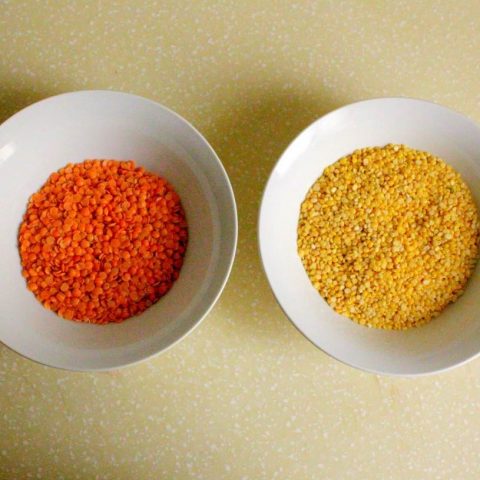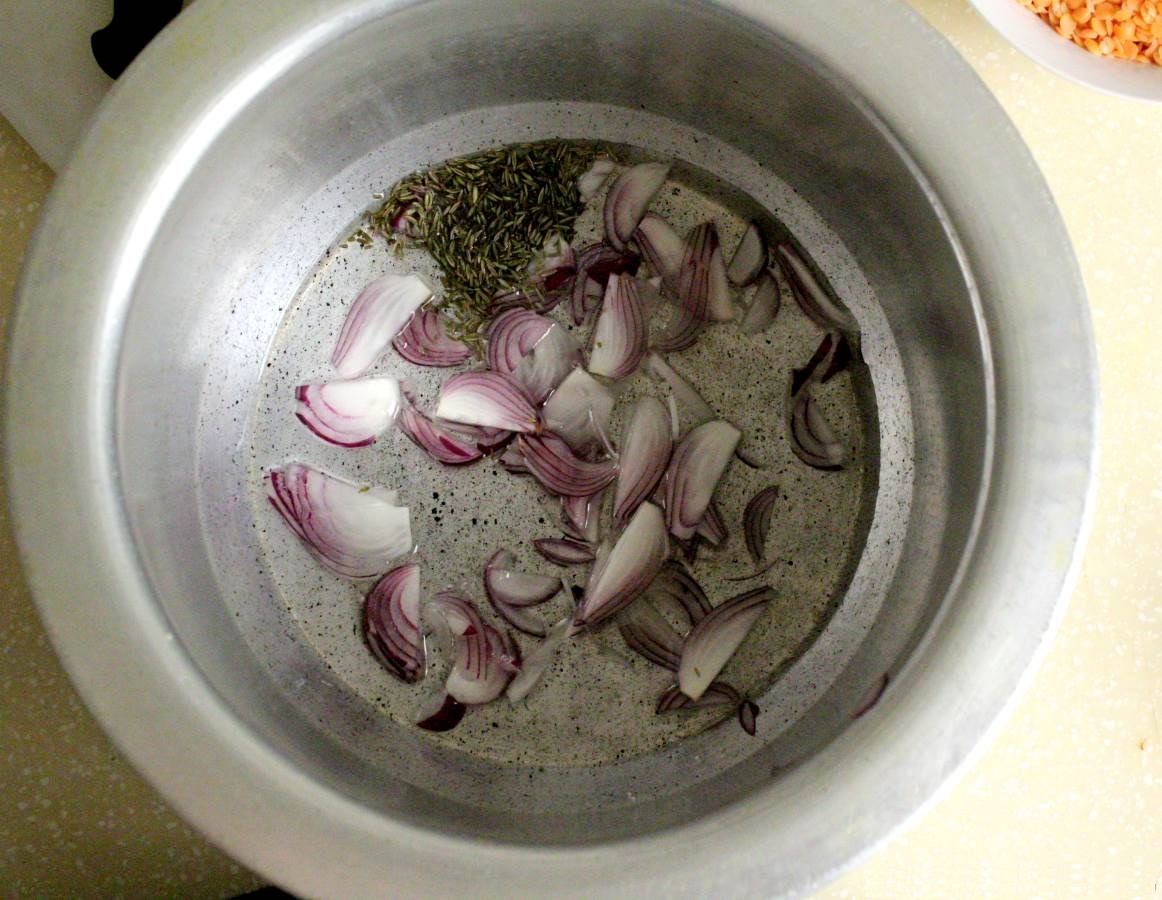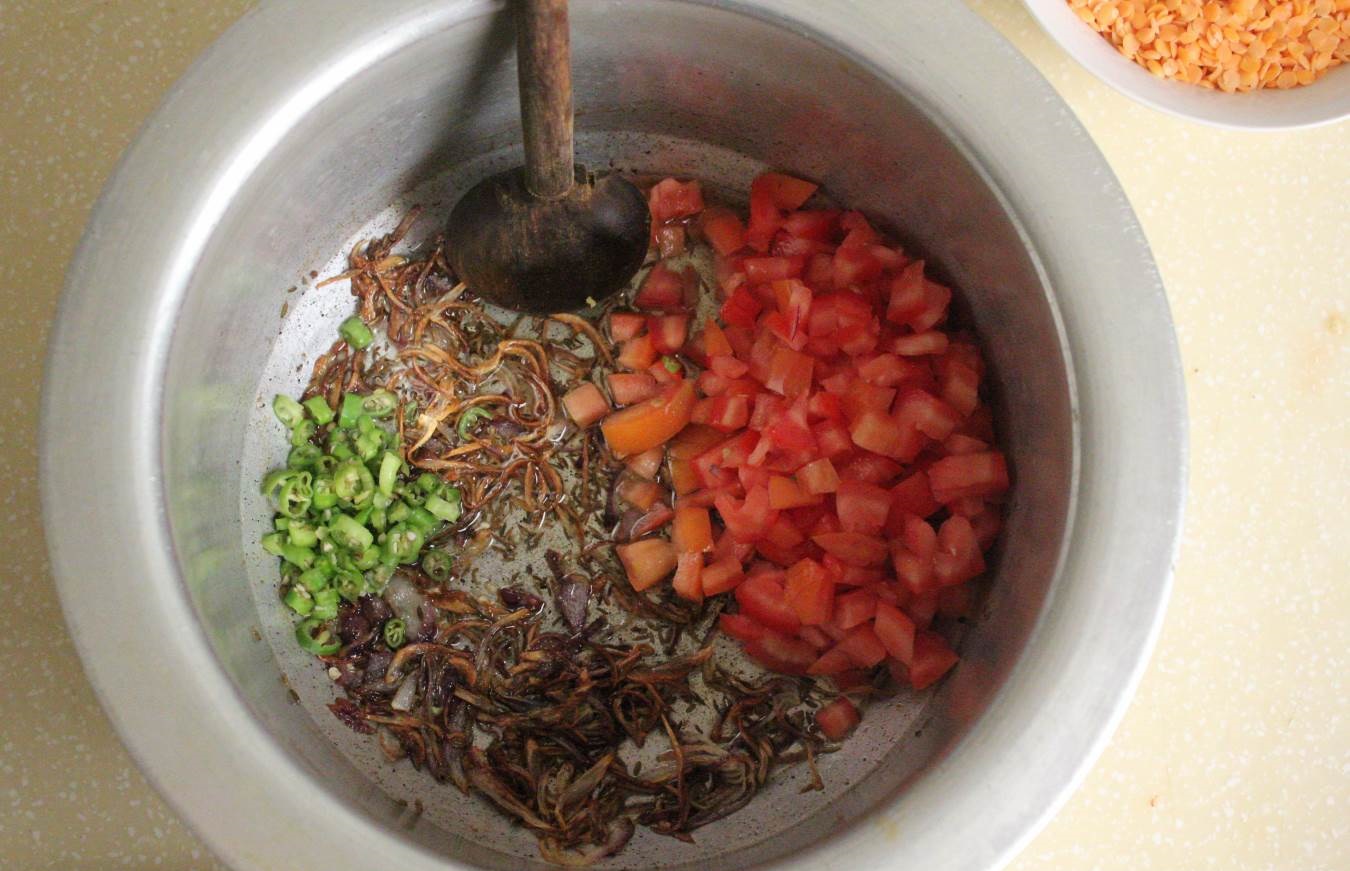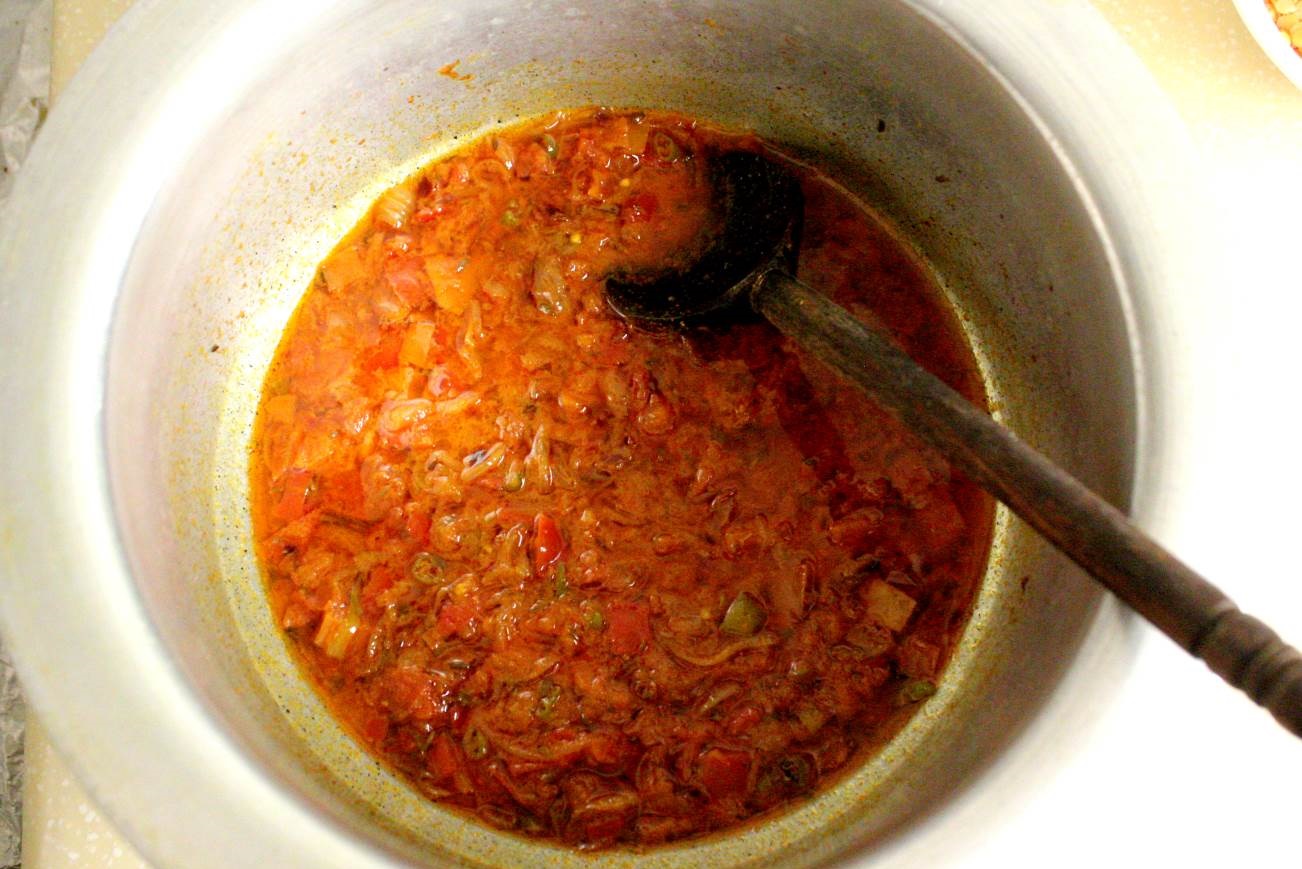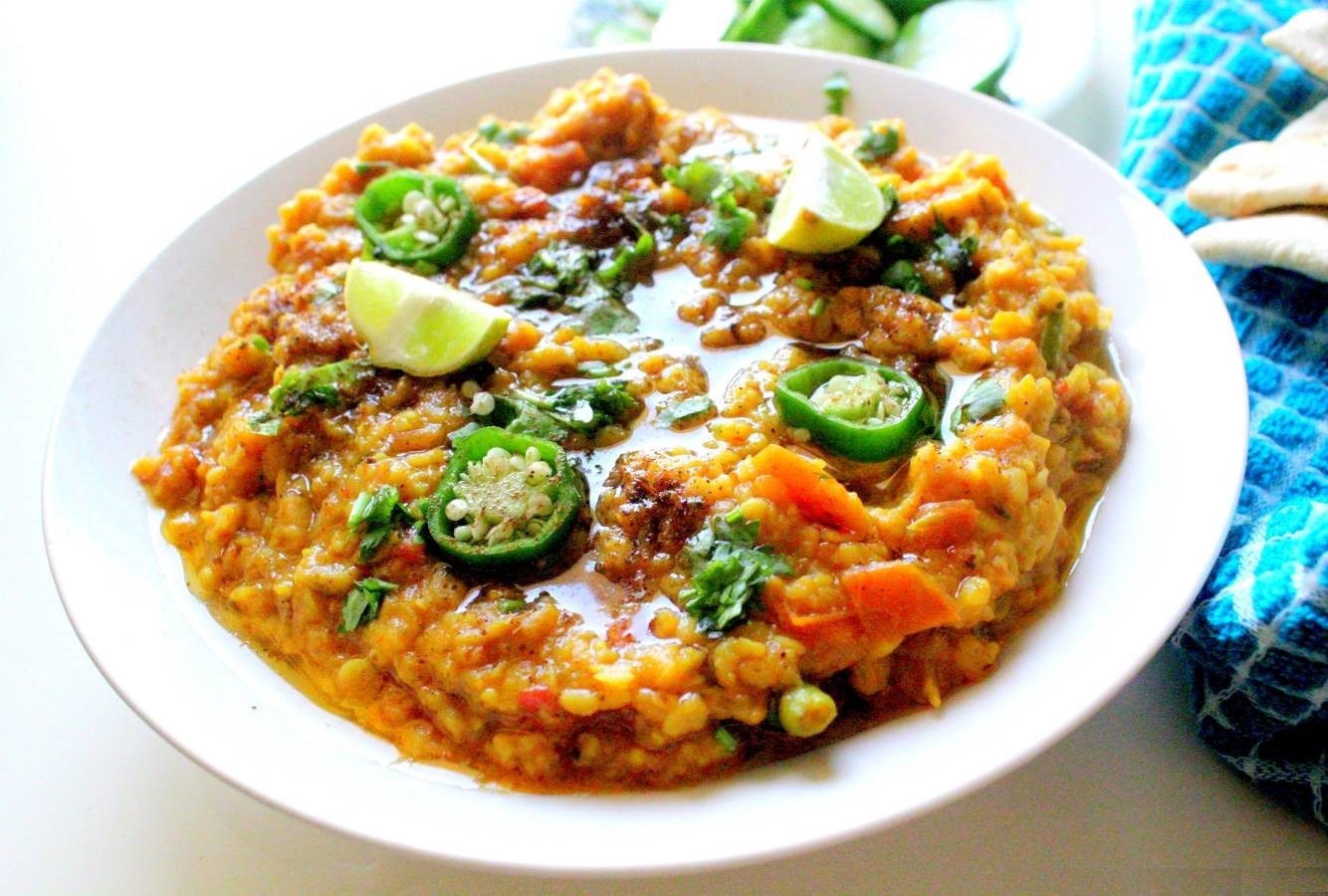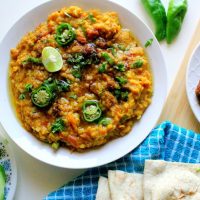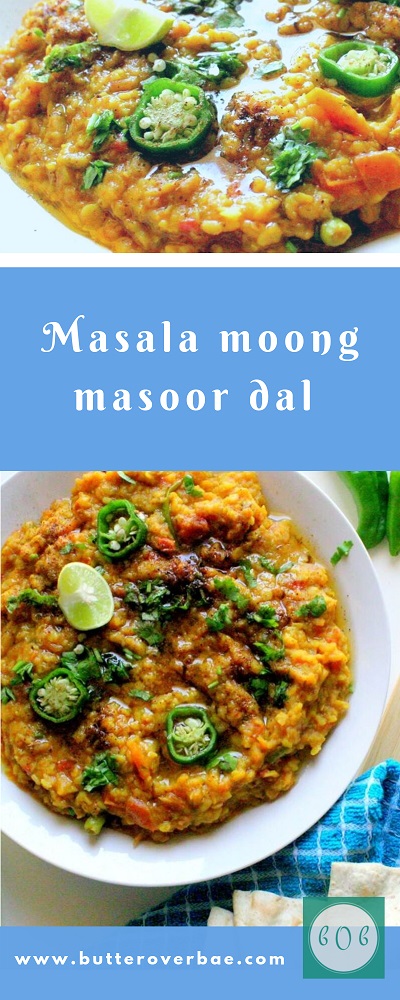Jump starting my week with this healthy Masala Moong Masoor Dal recipe. Moong and Masoor are two types of lentils, yellow and red respectively. If you have brown friends, you would know how much we love our dals (lentils). Its one of those staples for us like potato or rice. We eat dal with rice, chapati, or sometimes pair it with Meat dishes. Or you could just have it with a spoon (if you are on a diet). This particular version of lentils is more sturdy and thick and is meant to be eaten with roti, chapatis aka flat breads. They pair super well with kebabs like the Chicken and oats Kebabs, oh and Fried Fish goes so well with it too! Or if you are particularly only look for lentil recipes, this tangy lentil oats recipe is what you should read next.
STEP BY STEP FOR MOONG MASOOR DAL
We are using two very popular lentils here. The yellow lentils or Moong ki dal and the Red lentils or Masoor ki dal. The recipe is pretty easy and simple but I still took a few cooking shots for you guys to see. We usually soak the lentils in water for about 20 minutes before cooking with them. I soak both the red and yellow lentils together in warm water when I start cooking.
In a little bit of oil, I added sliced onions and cumin seeds and allowed the onion to turn golden brown.
Once the onion turned golden, I added chopped tomatoes and green chilies. All the seasonings and spices are also added at this stage plus a cup of water. I let the tomatoes get soft and dissolve completely. This takes around 10 to 15 minutes at medium flame.
After 15 minutes I added the pre-soaked lentils to the tomato curry along with 2 cups of water. This is when I turn on the flame to high and cover the pot. After 10 minutes, I check my lentils. They should be holding their shape but when pressed between the fingers they should break. This means the dal is cooked and not raw anymore. I put a girdle below my pot and let the dal cook for another 5 minutes at low flame. (also known as dam pe pakana in Urdu)
And thats it! I love to sprinkle some all spice powder on top of the cooked daal and some lemon juice to go with it. This version of daal is mainly made to eat with chapatis and parathas as it is more sturdier and not liquid in consistency.
Masala moong masoor dal (yellow and red lentils)
